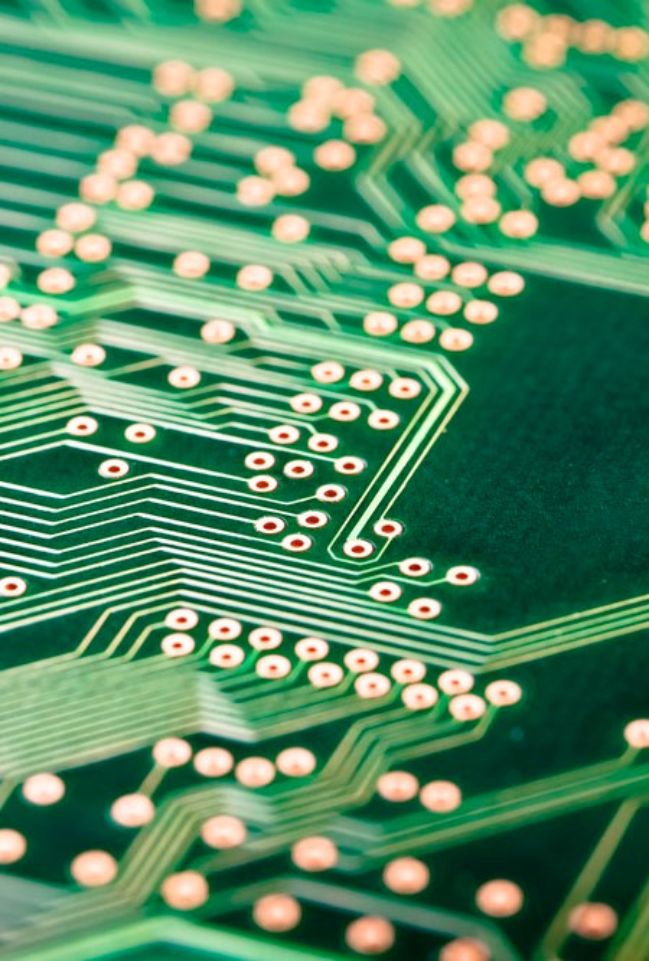What is the role of anodes in printed circuit board manufacturing?
Electroplating is the process of creating a conductive surface on the PCB or printed wire board (PWB) by laying down a thin layer of metal, typically copper, which enables circuit functionality. Anodes are central to the electroplating process, as they are the source of the metal being deposited onto the PCB during electrolysis. The electroplating process will determine the quality of the finished product, specifically how well electricity is conducted across the board. The process is a cost center for PCB and PWB manufacturing, and companies can maximize long-term profitability by creating the highest quality product at the lowest possible cost.
What anode characteristics ensure quality for printed circuit board electroplating?
For excellent PCB electroplating with strong connectivity, the following anode attributes are ideal:
- Good plating uniformity: This depends on maintaining a consistent gap between the anode and cathode and keeping the current flow stable.
- Strong productivity: Anodes that can operate at high current density result in superior electroplating.
- Less additive consumption: Additives are expensive, and anodes that consume as little as necessary are preferred to those with high additive consumption.
- Low required maintenance: Anodes that do not create sludge and last longer reduce the cost of maintenance and downtime.
What are some examples of products that use printed circuit boards?
All electronics use printed circuit boards, from high-end applications, such as HDI IC substrates used in smart phones and tablets, to low-end applications, such as toys and small household electronics. High-end printed circuit boards require many layers with a fine pattern; therefore, soluble anodes are not suitable due to their low plating uniformity. For high-end applications, insoluble anodes are recommended.
What are the differences between soluble and insoluble anodes?
While soluble anodes can be less expensive in the short term, they have a current density (5A/dm2) that is much lower than insoluble anodes (up to 30A/dm2) and a current distribution that is uneven, as compared to the highly uniform current distribution of insoluble anodes. The electrode gap with soluble anodes is typically above 400mm (as compared to 100mm for insoluble), and they have a lower via filling ratio than insoluble anodes.
Also, they gradually dissolve during electrolysis, which has several unfortunate results:
- The creation of debris (sludge) in the plating solution, which increases maintenance and decreases product quality
- An anode size and shape that is constantly changing, which impacts performance consistency
- A short operational life, which contributes to frequent and arduous maintenance
Because insoluble anodes do not dissolve, they overcome all these challenges. Their one downside is that they typically have higher additive consumption than soluble anodes, which can increase operating expenses for manufacturers. De Nora has overcome this one challenge with DENORA DT anodes (see below for more detail).
What are the benefits of using insoluble anodes for printed circuit board manufacturing?
Using insoluble anodes for PCB manufacturing delivers the following benefits:
- Good plating uniformity and connectivity
- Strong process productivity
- Less maintenance
- No anode sludge
- Higher quality finished printed circuit boards and printed wire boards
What is the role of additives during printed circuit board electroplating?
During printed board electroplating, manufacturers often apply organic additives to the electrolyte to improve grain refinement, throwing power, leveling and brightening of the copper deposit. Additives can significantly increase the cost of PCB electroplating, so manufacturers prefer to use as little as necessary to achieve desired results.
There are three basic types of additives used in acid copper plating:
- Carriers/suppressors: Carriers are adsorbed at the surface of the cathode, and in concert with chloride ions, act to suppress the plating rate.
- Brighteners: Brighteners improve the reflective finish of the plated metal and prevent the formation of rough or dull deposits on the surface of the PCB.
- Levelers: Levelers ensure a more uniform plating thickness by controlling the throwing power effects.
The De Nora solution
With DENORA DT anodes, manufacturers get the best of both worlds: Long-lasting anodes that deliver high and consistent performance, do not degrade or introduce impurities, require little maintenance, and offer additive consumption equivalent to soluble anodes. Our insoluble anodes are used by leading PCB manufacturers and selected by equipment suppliers for their vertical continuous plating (VCP) lines and horizontal electroplating equipment.
While some insoluble anodes depend on an anode box to minimize additive consumption, DENORA DT anodes have a membrane function incorporated into the coating layer, eliminating the need for an anode box while also minimizing additive consumption. This feature also eliminates the cost of an anode box.
DENORA DT anodes ensure optimum performance with:
- Uniform copper plating distribution and excellent throwing power
- Reliable copper via filling ability
- 1:1 surface to through-hole uniformity
- Extremely low additive consumption without membrane
- Elimination of nodules and surface sanding
- Improved plating bath life with stable performance
- Less bath maintenance by reducing TOC
- Long service life
- Elimination of anode maintenance
- Ability to operate at increased current density
Our 100-year legacy in electrochemistry now extends around the world and that is one reason companies find great value in working with De Nora. We offer customizable solutions and global support to help our customers optimize operation and achieve manufacturing and profitability goals. Our robust and proven electrochemical solutions are under a continual development process for ever-improving performance regarding simplicity, safety, sustainability, efficiency and output.
